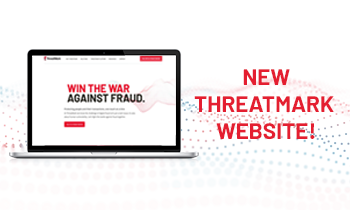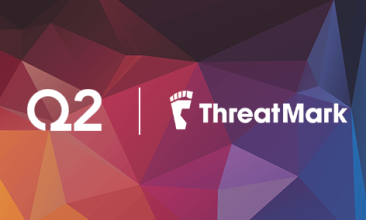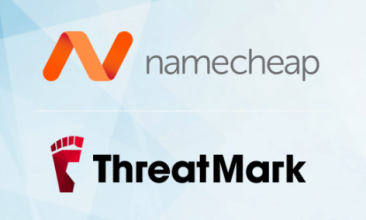Insights
Explore the latest company news, market insights, and the latest on digital fraud with our Insights.
Featured Post
THREATMARK JOINS FORCES WITH Q2 IN LANDMARK PARTNERSHIP AGAINST FRAUD
At ThreatMark, our mission is to help global institutions fight online fraud. That’s why we’re excited to announce our integration with Q2’s Digital Banking Platform, through the Q2 Partner Accelerator Program, in the United States.
Read More

Filter Close
-
 April 18, 2024
Who Carries the Cost of Fraud? The Changing Landscape of Fraud Liability
As the payment services industry evolves, it faces critical challenges. One of the most imminent is the continuous fight...
April 18, 2024
Who Carries the Cost of Fraud? The Changing Landscape of Fraud Liability
As the payment services industry evolves, it faces critical challenges. One of the most imminent is the continuous fight...
-
 April 10, 2024
Tackling the Rising Threat of Digital Fraud in Sweden
Sweden and other Nordic nations are facing a daunting challenge of digital fraud. Fraudsters are employing advanced social engineering...
April 10, 2024
Tackling the Rising Threat of Digital Fraud in Sweden
Sweden and other Nordic nations are facing a daunting challenge of digital fraud. Fraudsters are employing advanced social engineering...
-
 April 3, 2024
What’s New in 2024: ThreatMark among Top Startups and a Website
As 2024 progresses, so do we at ThreatMark! For the third consecutive year, CzechCrunch has included us in its...
April 3, 2024
What’s New in 2024: ThreatMark among Top Startups and a Website
As 2024 progresses, so do we at ThreatMark! For the third consecutive year, CzechCrunch has included us in its...
-
 March 5, 2024
A Modern Approach to Financial Crime
Reducing and preventing financial crime
On 8th February 2024, the FCA released an update on the progress that has been...
March 5, 2024
A Modern Approach to Financial Crime
Reducing and preventing financial crime
On 8th February 2024, the FCA released an update on the progress that has been...
-
 January 2, 2024
ThreatMark Joins Forces with Q2 in Landmark Partnership Against Fraud
At ThreatMark, our mission is to help global institutions fight online fraud. That's why we're excited to announce our...
January 2, 2024
ThreatMark Joins Forces with Q2 in Landmark Partnership Against Fraud
At ThreatMark, our mission is to help global institutions fight online fraud. That's why we're excited to announce our...
-
 February 22, 2023
ThreatMark Named Top 25 in ’23
Sound the trumpets, ring the bells, and let all the fraudsters know… ThreatMark has been nominated as one of...
February 22, 2023
ThreatMark Named Top 25 in ’23
Sound the trumpets, ring the bells, and let all the fraudsters know… ThreatMark has been nominated as one of...
-
 January 11, 2023
The Phishers Favorite Pond
In an effort to keep our customers up to speed on the latest trends when it comes to fraud...
January 11, 2023
The Phishers Favorite Pond
In an effort to keep our customers up to speed on the latest trends when it comes to fraud...
-
 December 7, 2022
The Phishers Greatest Ally
In an effort to keep our customers up to speed on the latest trends when it comes to fraud...
December 7, 2022
The Phishers Greatest Ally
In an effort to keep our customers up to speed on the latest trends when it comes to fraud...
-
 November 21, 2022
Protecting the Pond
In an effort to keep our customers up to speed on the latest trends when it comes to fraud...
November 21, 2022
Protecting the Pond
In an effort to keep our customers up to speed on the latest trends when it comes to fraud...
-
 November 10, 2022
Don’t Take the Bait
In an effort to keep our customers up to speed on the latest trends when it comes to threat...
November 10, 2022
Don’t Take the Bait
In an effort to keep our customers up to speed on the latest trends when it comes to threat...
-
 August 26, 2022
New Phishing Campaign Identified
On August 4th, 2022 we discovered and confirmed an active phishing campaign targeting users of multiple major European banks...
August 26, 2022
New Phishing Campaign Identified
On August 4th, 2022 we discovered and confirmed an active phishing campaign targeting users of multiple major European banks...
-
 June 7, 2022
Automated phishing site takedown with Namecheap and ThreatMark API integration
Phishing is the scourge of the modern digital era. Verizon’s Data Breach Investigations Report notes that over 82% of...
June 7, 2022
Automated phishing site takedown with Namecheap and ThreatMark API integration
Phishing is the scourge of the modern digital era. Verizon’s Data Breach Investigations Report notes that over 82% of...